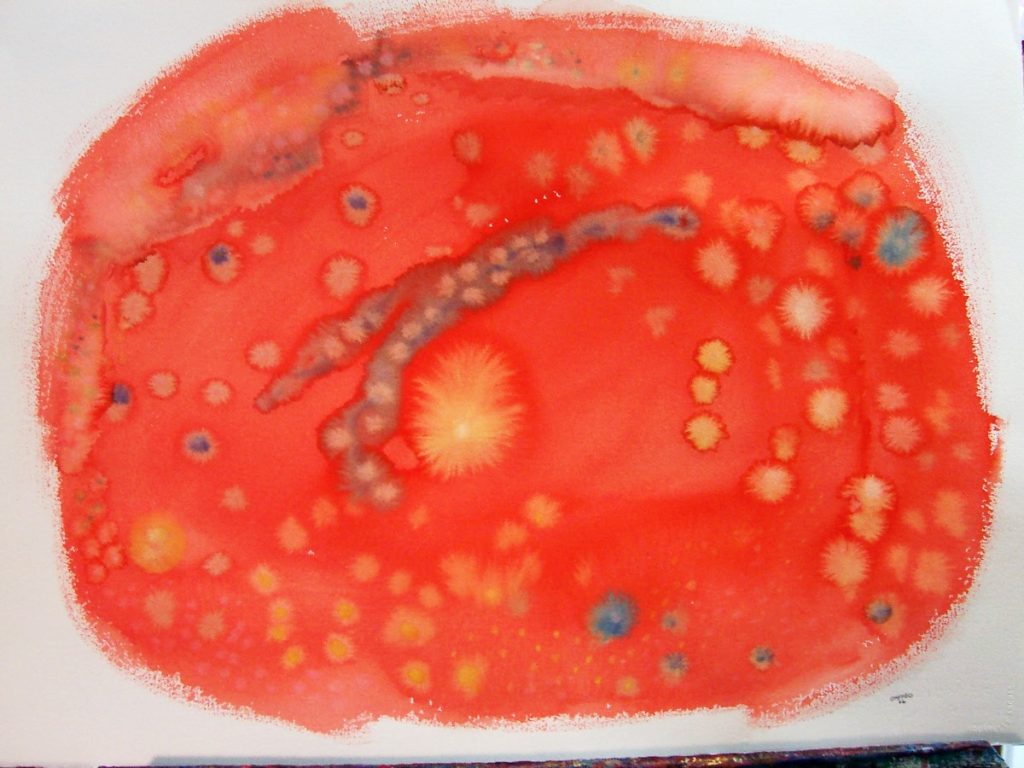
© Orffeo
“I had to create an equivalent for what I felt about what
I was looking at—not copy it.” Joe Orffeo
This one’s personal. Joe orffeo was an incredibly talented artist and a good friend. His passion for art was balanced by a passion for science and we had many discussions, often about cosmology before his recent passing.
The real power of art, be it visual, auditory or written, is that it transcends our limited ability to grasp the true nature of reality. although some artists train their focus exclusively on aesthetics, many others, especially the great ones, draw on feelings deep inside and approach art as an opportunity to express the way they relate to our ineffable universe. This connection to dimensions that supersede limited human intellectual processing is often subconscious. Perhaps the meditation encouraged by Zen gives us some idea about how this connection might occur. But it often takes generations before the genius is recognized—if at all.
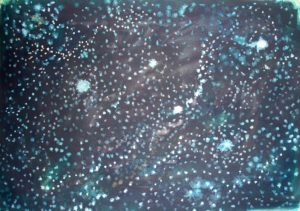
Celestial Dynamics © Orffeo
Van Gogh’s “Starry Night” for example, is now thought to have captured nature’s application of fluid dynamics to motion and light. “In a period of intense suffering, Van Gogh was somehow able to perceive and represent one of the most supremely difficult concepts nature has ever brought before mankind.” [Maria Popova, BrainPickings]. A review of the TED chapter “The Unexpected Math Behind Van Gogh’s ‘Starry Night’” provides even more detail on just how seriously science takes this phenomenon. Further, an interpretation of Picasso’s Cubism period suggests an innate understanding of the world from a 4-or more spatial dimension perspective.
In his later years Orffeo was captivated by the motion of galaxies and the mysterious forces that govern space, time and matter. His technique was to use subtle background effects to suggest the depth and dynamism that go beyond obvious images that pass-through telescopes. In that regard one of the biggest mysteries in science today is the fact that most of the mass in the universe is missing. According to a NASA web page “…is it merely hidden in some exotic form? … The problem of the missing mass has gotten to the point where it is more than just a problem. It is an embarrassment, an obstacle to understanding such things as the structure of galaxies, the evolution of clusters, and the ultimate fate of the universe. [see attachments]. Might some deep insight about this issue be veiled in art?
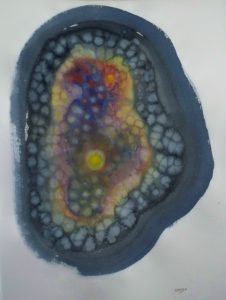
The Cosmic Egg © Orffeo
One of the most widely accepted theory’s in cosmology today is the “Big Bang.” Based largely on Edwin Hubble’s calculation of the red shift of galaxies compared to their distances, he postulated that everything in the universe is moving away from everything else. That suggests that at one time (about 14 billion years ago) everything existed at one point. Cosmologists have taken these facts to the ultimate. They believe that everything in the universe originally sprang out of nothing. Not surprisingly, there are many challenges to this theory. One came millennia ago from the Hindus. Their cosmology involves an eternal cyclic universe that expands and contracts forever—and we happen to be in an expansion phase. “…there aren’t a lot of differences between Hindu cosmology and the science of modern cosmology … what is most interesting about the two, is just how little their time scales differ, as noted by Carl Sagan.” [see attachments].
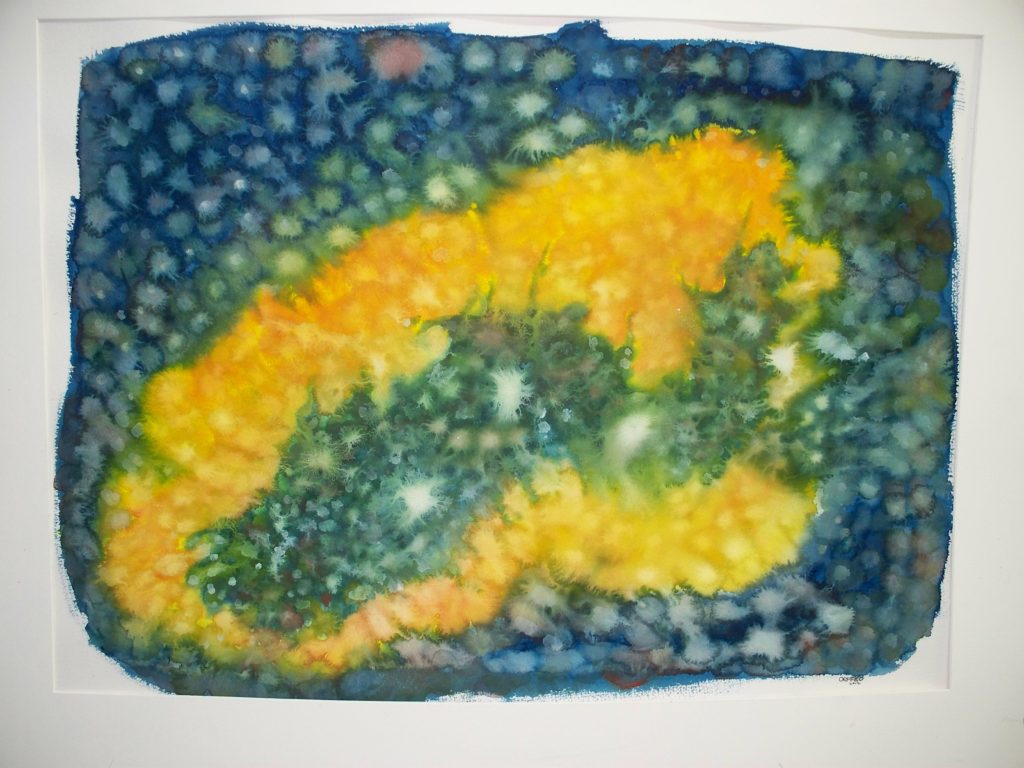
Nature’s Cornucopia © Orffeo
Another possibility is that a cosmic egg existed. Rather than everything springing out of nothing, all the elements of reality might have been contained in a relatively small package.
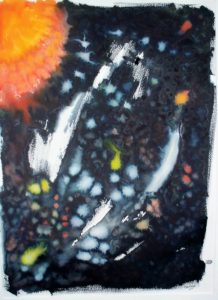
The Force of Light and Dark © Orffeo
Back to the universes’ missing mass—it is believed to exist in two entities that remain as severe enigmas to science. Dark Matter and Dark Energy have been calculated to form more than 80% of the mass of the universe. But, they are only mathematical entities. They are thought to exist because the motion of galaxies wouldn’t make sense without them. Other than that science doesn’t have a clue about what they are. If there ever was a case for the need to supersede the limited abilities of human perception, this is it. Does Orffeo’s work provide an insight into this mystery? Time may tell.
An interesting question remains regarding the connection of an artist’s deep intuition into the true nature of reality: how aware is the artist of the subtle insights being presented? One of my favorite books is Moby Dick. There are places where up to four layers of symbolism are in play. I’m convinced that Herman Melville could not possibly have been conscious of the incredibly rich message he created. His inspiration was, without a doubt, a product of a subconscious connection to a wealth of awareness well beyond typical human limitations.
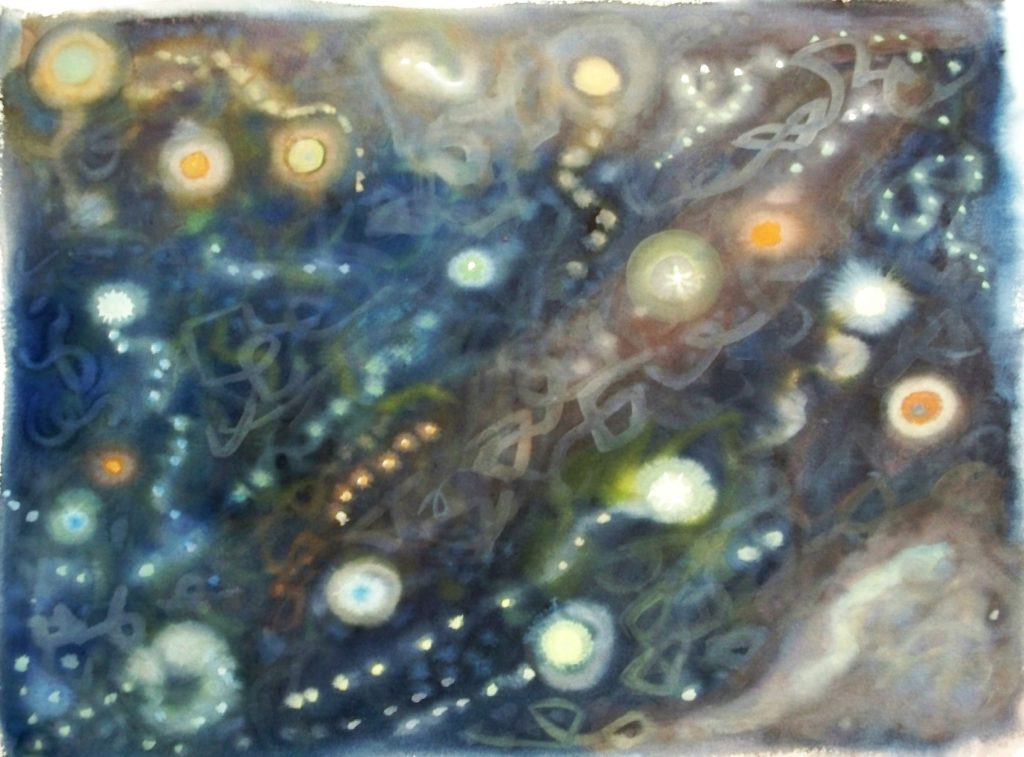
© Orffeo
There is no doubt that Joe Orffeo had some awareness of the symbolism contained in his art. I know this from personal discussions we had. However, I’m also convinced that he was not consciously aware of the full extent of the allegory of his images. If we could discuss this today he would, no doubt, be surprised by this analysis of his work. But, on reflection, he would likely understand and accept it. Were Mahler or Beethoven fully conscious of their predictions regarding the sweep of human history? I think not. However, the power of their messages is there for all to see (and hear).
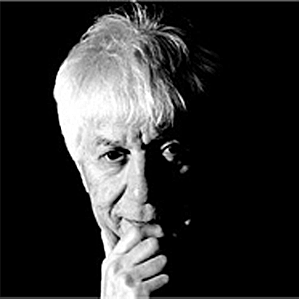
Joe Orffeo
My good friend Joe Orffeo left us in 2013. He was an artist, painter sculptor and trailblazer with his technique. He saw the world, and the universe in a unique and personal way. He said of his own work “I had to create an equivalent for what I felt about what I was looking at—not copy it.” Art critic Anthony Bannon said “Orffeo reduces, simplifies, clarifies the visions that are given to him. But his is a vision that begins in a voluptuous manner, in many colors, and absolutely unheard of before.” His work is featured at the Burchfield Penny Art Center in Buffalo, New York and the Meibohm Art Gallery.
http://ed.ted.com/lessons/the-unexpected-math-behind-van-gogh-s-starry-night-natalya-st-clair
http://history.nasa.gov/SP-466/ch22.htm
https://www.quora.com/What-is-the-difference-in-Hindu-cosmology-and-science-about-the-origin-of-this-universe
https://www.burchfieldpenney.org/artists/artist:joseph-orffeo/
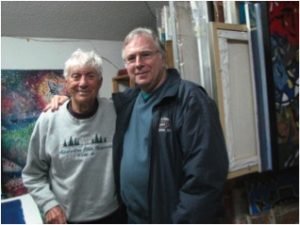
Joe Orffeo and Dan Duda
© Roberto Muffoletto
